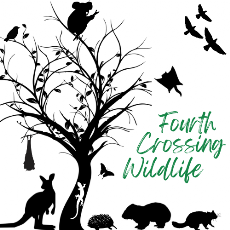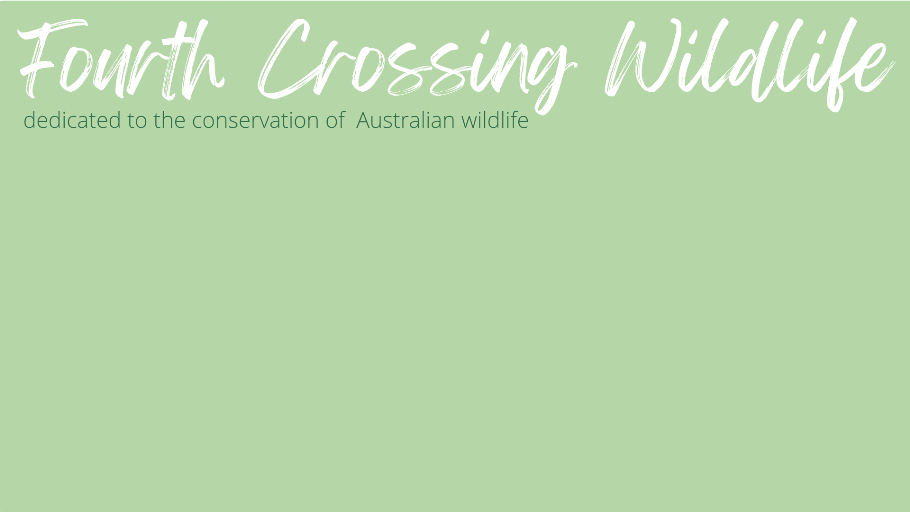Stories
A Spikey Dragon
by Linda Dennis
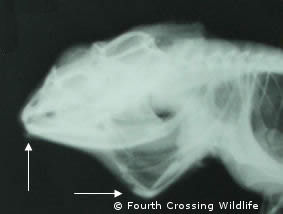 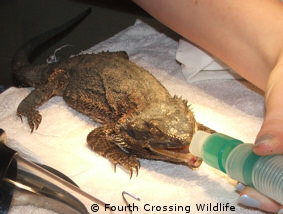 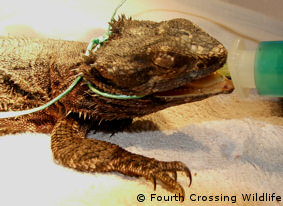 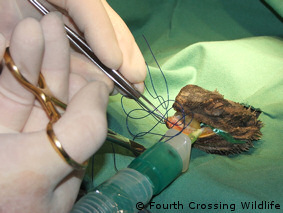 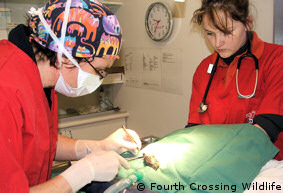 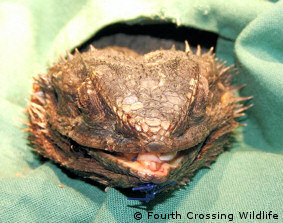 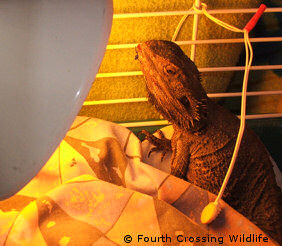 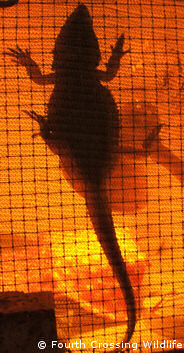 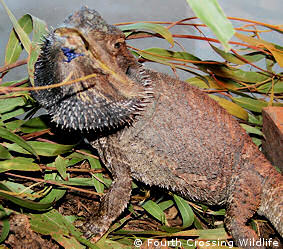 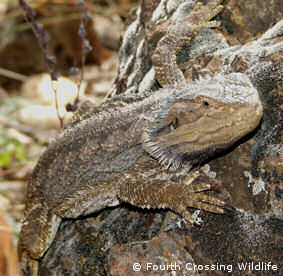 | Very late one afternoon I got a call from my vet Judith, "I've got a problem and I need your help," she said. "I've got a Water Dragon that's just been dropped off and I need a good carer who I can trust to take it through post-operative care". Right I thought, a Water Dragon, this is a first! For the next hour I busied myself with finding as much information as I could on the care of the species. I Googled "water dragon" and found that they were huge, nearly a metre in length - oh no, I didn't have a box or cage big enough to house such an animal! I contacted several of my wildlife colleagues who quickly sent me some information on their care and then I rang Judith back to let her know all was in hand... except for a transport box, did she have anything big enough? With an embarrassed giggle Judith told me that the lizard wasn't nearly that big!! The surgery had been really busy and Judith hadn't had a chance to look up her reptile guide and in her excitement the first thing that popped into her head was "Water Dragon". After deliberation we agreed that what we had was actually a Bearded Dragon. Spike the Bearded Dragon, in fact. Poor Spike had been hit by a car, usually a death sentence for such a small critter. His jaw was broken at the front, as was one side of his beard. After discussing the case with a reptile specialist, Judith found that Spike's injuries were treatable and so surgery was scheduled for early the next day. I was invited to help out during surgery - another first! I fought back my nerves and was in town by 9am to help repair Spike's broken bones. Judith was on a day off herself and so we worked, uninterrupted, for several hours. There were three in the surgical team - Judith, myself and Sam, a work experience, up and coming vet nurse with so much potential she could bust! The enthusiasm and skill that Sam showed to her work was inspiring and did the vet clinic proud! With Judith performing the surgery and Sam her leading hand, I became the "bag lady"! My job was to breath for the lizard while he was sedated. A tube was placed down his throat and taped to his mouth and then every 30 seconds or so I squeezed the bag, ever so slightly, to give the lizard oxygen and anesthetic. At first I didn't realise just how gently I had to squeeze the bag. On my first attempt I squeezed the bag to hard and Judith nearly died when she saw the lizard nearly blow up like a balloon. Oops! Lizards go into a hibernation during winter, where they very nearly shut themselves down and sleep for long periods. During surgery the anesthetic can put a lizard into a similar state. Several times we had to halt surgery to check that Spike was still alive. With Judith and I keeping our fingers firmly crossed Sam listened for the heartbeat. It was there just very, very faint. I thought that I'd feel queasy during surgery, it was even in the back of my mind that I may faint! However, I was totally and utterly enthralled! Judith did an amazing job of wiring Spike's jaw and stabilising the break. I was in awe of the work she did. After a few hours Judith announced that she had finished and Spike was handed over to me for his post-operative care. After such amazing work by Judith and Sam, I hoped that I could keep Spike alive and nurse him back to health. Spike's mouth must have been pretty sore and he refused to eat on his own. I knew that I would have to force feed Spike for the first few weeks, this is a normal for an adult wild animal, but I think Spike was quite depressed with his predicament and refused to eat on his own for the nine weeks he was in care. It wasn't until the last week or so of care that he would take food but we had to tap the food on the side of his mouth for him to even bother. For the first week Spike was kept in a warm intensive care box lined with soft material to keep the surgical site clean. He spent a lot of time sleeping under his heat lamp. In the second week Spike was moved into a larger hospital box, still with a heat lamp but a basking rock was added which he loved lying on during the day. He also loved climbing the shadecloth that lined the cage door and he rested there for several hours a day. When Spike's jaw had healed and he showed signs that he wasn't in pain he was moved into a habitat enclosure - a 1.2 metre aquarium lined with dirt and leaf litter. Logs and leafy branches were also placed in the enclosure so that Spike could climb and hide. A large basking rock was placed in one end with the heat lamp over the top and a bowl of water in the other end. We saw Spike lying in the bowl of water on a couple of occasion after a lengthy sunbake. The wire is Spike's jaw was removed when the bones had healed nicely. The break in his beard was left to heal naturally as it was a very tricky area to operate on. There was a risk that his beard wouldn't expand quite as much as it normally would, however. Spike's bones healed well and near the end of his care he would expand his beard fully whenever we approached. After nine weeks in care he still didn't like us much. He was ready to go. We've created a native bush garden at our home and it is a great place to release native animals. We chose a spot under a large log to release Spike. After showing signs of really not liking us very much Spike wasn't too sure if he actually wanted to go. He stayed in that spot for hours, soaking up the sun. At one stage it starting raining and (silly me) brought him back inside so he didn't get cold! When the rain stopped back out he went. Todd fed him one last time and we turned our backs to walk back inside. We looked back over our shoulder... Spike had disappeared... back to bush. |
